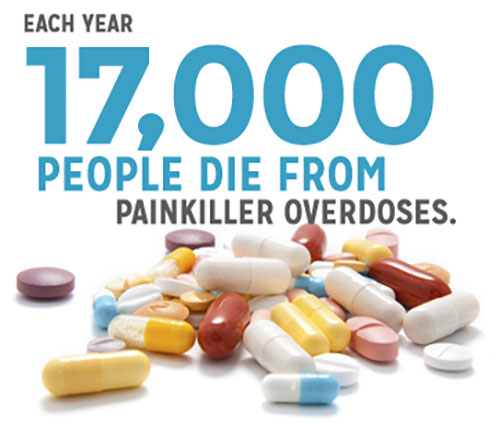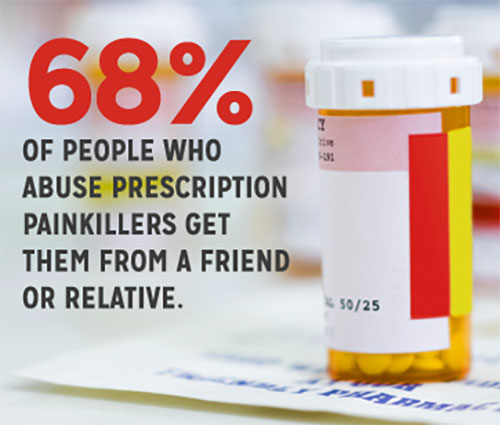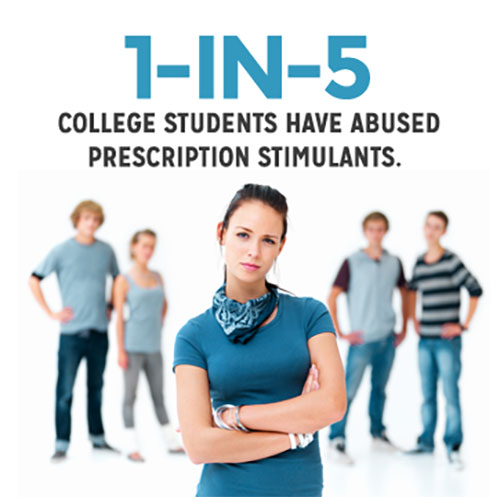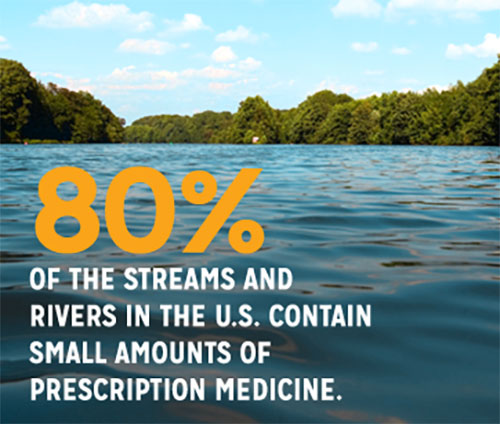The Problem
Nationwide Epidemic
DEATHS

- Deaths related to prescription painkiller use increased 313 percent over the past decade.
- In 2013, over half (almost 52%) of all the drug overdose deaths in the U.S. were related to prescription drugs.
- More people die from prescription drug overdoses than from car accidents or overdoses from common street drugs such as cocaine or heroin.
ACCESS AND TREATMENT

- Pharmacists dispense enough prescription painkillers every year to supply each American with a pill to take every four hours, around the clock, for a month.
- Prescription painkiller-related treatment admission rates increased 400 percent from 2000 to 2010.
- Admission rates for treatment of prescription drug misuse or excessive use increased every year from 2000 to 2010.
KIDS AND TEENS

- Children under age six account for about 40 percent of all exposures reported to poison centers.
- About 1-in-5 12th graders report abusing or improperly using a prescription medicine at least once.
- 38 percent of teens who have misused prescription medicine took it from a parent’s medicine cabinet.
- Almost half of teens who have misused prescription medicine obtained it from a friend.
YOUNG ADULTS

- 96 percent of young adults who misuse prescription stimulants believe their friends misuse prescription stimulants as well.
- 57 percent of young adults who misuse prescription stimulants say the last time they did so, they got the drug from a friend.
- 28 percent of young adults who have been legally prescribed stimulants share their medicine with friends.
- 52 percent of young adults who have been legally prescribed stimulants say they’ve been pressured by friends into selling or sharing their medicine.
POLLUTION

- Pharmaceutical residues have been detected in the drinking water of 24 major metropolitan areas across the country serving 46 million people.
SOURCES
- Colorado Consortium. (2014). Prescription Drug Abuse Prevention.
- National Institute on Drug Abuse. (2014). Monitoring the Future Study: Trends in Prevalence of Various Drugs.
- Partnership for Drug-Free Kids. (2014). Normalized Behavior Study Among College Students.
- Partnership for Drug-Free Kids. (2013). The Partnership Attitude Tracking Study.
- Substance Abuse and Mental Health Services Administration (SAMHSA). (2013). National Survey on Drug Use and Health (NSDUH): National Findings.
- Substance Abuse and Mental Health Services Administration (SAMHSA). Treatment Episode Data Set (TEDS) 2000-2010.
- United States Geological Survey (USGS). (2002).Pharmaceuticals, Hormones, and Other Organic Wastewater Contaminants in U.S. Streams: USGS Fact Sheet.